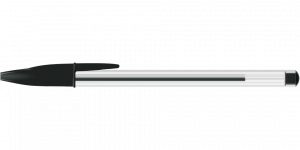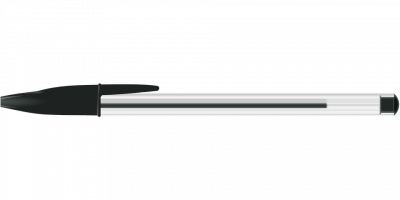
We’re all Constitution-loving, survival-oriented preppers who are always preparing for every emergency. The problem is that emergencies are not able to be “compressed” into a format: they arise. You plan the best you can, but there’s an age-old military adage that summarizes the whole situation, in a nutshell, “No battle plan ever survives the first five minutes of combat completely intact.”
This is true, and places emphasis on the quality that made man the dominant species on this planet and enabled him to survive as long as he has: adaptability. In this light, there will be a time when you will need to defend yourself and do not have a weapon readily available. When such a situation presents itself, you must follow the advice of “Gunny Highway”/Clint Eastwood in the movie “Heartbreak Ridge,” advice that holds brevity and clarity:
“You improvise, you adapt, you overcome.”
That is eloquence swathed in simplicity. Yes. Two hoodlums, for example, are coming over to you at night in the parking lot after work. You can’t avoid them and get into your car before they’re on you. One clicks open a knife. It’s time to act. The action has to take place in a split second. Let’s say you’re unarmed – no firearms or blades, and you can’t escape. What now?
Common objects on your person may either be utilized or prepared beforehand and then utilized. Let’s go through some of them you may have, and what to do with them:
- Keys: (this will take practice) – take three of them and slip them between your fingers with the keyed end (“blade”) facing out. Grip the rest in your fist and prepare to punch. An effective way to plan ahead for this encounter is if you attach a kubaton to your keychain.
- Pens: A good sturdy one made from metal is preferred; a plastic one may work, but you better strike effectively. Hold the pen one of two ways: gripped within your fist with the pen extruding from the bottom of your fist/hand, or with the pen between your middle and ring finger, the base on your palm and the point out from between the fingers. “Method 1” is preferable because you can stab (a backhanded type of stab) with the pen, and still punch with the fist that holds it. “Method 2” will take more precision as you strike for the vulnerable points.
- Belt: Use only if your pants won’t just fall down and they can stay on without the belt. Strip that belt off, and wrap it around your dominant hand and make a fist. If you really know what you’re doing, you can wrap the knife hand of the attacker and disarm him. You had better have practiced this unless you’re a really good athlete.
- Credit card/ATM card (handy): By “handy,” there’s no time to take it out of your wallet. You may keep a very rigid plastic card in your shirt pocket. Hold the card tightly and the edge can be knife-like when striking an opponent…for a very effective strike.
- Jacket/windbreaker: Take it off and use it to shield you (in one hand as a shield) from the blade as you strike with the opposite hand. You can (if you’ve practiced) wrap up that blade-carrying hand of the opponent while you’re striking.
- Leatherman on that belt? Pull it out quickly, and in the manner of the pen (described in #2) hold it in the manner of “Method 1” where the pliers are extended past the bottom of your hand…to stab/strike in a backhanded method.
- Purse: Ladies, that handbag can be a lifesaver for you. Prep this beforehand: keep a 1-pound or ½ pound weight or little dumbbell in it. Then no cop can get you for a concealed weapon. You’ll even have a light workout during your day! But when you swing that bag down and put a three-inch dent in your attacker’s head, you’ll be glad you put the weight in there. Make sure your purse strap is strong enough to handle this action without losing your purse or snapping.
Now, of course, you should also look around (use your peripheral vision! Don’t take your eyes off of or away from your attackers!) for boards, bricks, rocks, or anything else within your reach. Do you have a car alarm? Push that button and raise a ruckus. I knew a woman once who was going to get jumped in this manner in the parking lot. She didn’t have a car alarm, but she threw rocks at a couple of other cars before they closed on her and set off those car alarms. Then she threw rocks at them and screamed, and others came to her aid.
The eyes and the face are your primary targets with the keys and pen. Secondary are the sides of the neck and the throat: where the carotid and jugular are, and the airway respectively. The face of the credit card: a slash maneuver. You’ll be surprised at how deeply into the flesh that card will slice. Your objective is not to engage with them. Your objective is to inflict the maximum amount of damage and pain on them and then break contact…get away…at the soonest possible moment.
Don’t let a pair “flank” you: if you must face one, try and step to his side so the other one is behind him…so your primary attacker is in between you and his buddy. With these methods, you need to practice them to enable you to execute them. It is different when the adrenaline is pumping and you’re faced with the threat. Don’t be afraid to experiment; however, make sure your experiments and the “main event” are not the same thing. The more practice, the more you will build your confidence and increase your chances for success should such a situation arise. Hope it won’t, but if it does? Go for the win. JJ out.
Jeremiah Johnson is the Nom de plume of a retired Green Beret of the United States Army Special Forces (Airborne). Mr. Johnson was a Special Forces Medic, EMT and ACLS-certified, with comprehensive training in wilderness survival, rescue, and patient-extraction. He is a Certified Master Herbalist and a graduate of the Global College of Natural Medicine of Santa Ana, CA. A graduate of the U.S. Army’s survival course of SERE school (Survival Evasion Resistance Escape), Mr. Johnson also successfully completed the Montana Master Food Preserver Course for home-canning, smoking, and dehydrating foods.
Mr. Johnson dries and tinctures a wide variety of medicinal herbs taken by wild crafting and cultivation, in addition to preserving and canning his own food. An expert in land navigation, survival, mountaineering, and parachuting as trained by the United States Army, Mr. Johnson is an ardent advocate for preparedness, self-sufficiency, and long-term disaster sustainability for families. He and his wife survived Hurricane Katrina and its aftermath. Cross-trained as a Special Forces Engineer, he is an expert in supply, logistics, transport, and long-term storage of perishable materials, having incorporated many of these techniques plus some unique innovations in his own homestead.
Mr. Johnson brings practical, tested experience firmly rooted in formal education to his writings and to our team. He and his wife live in a cabin in the mountains of Western Montana with their three cats.
This information has been made available by Ready Nutrition
